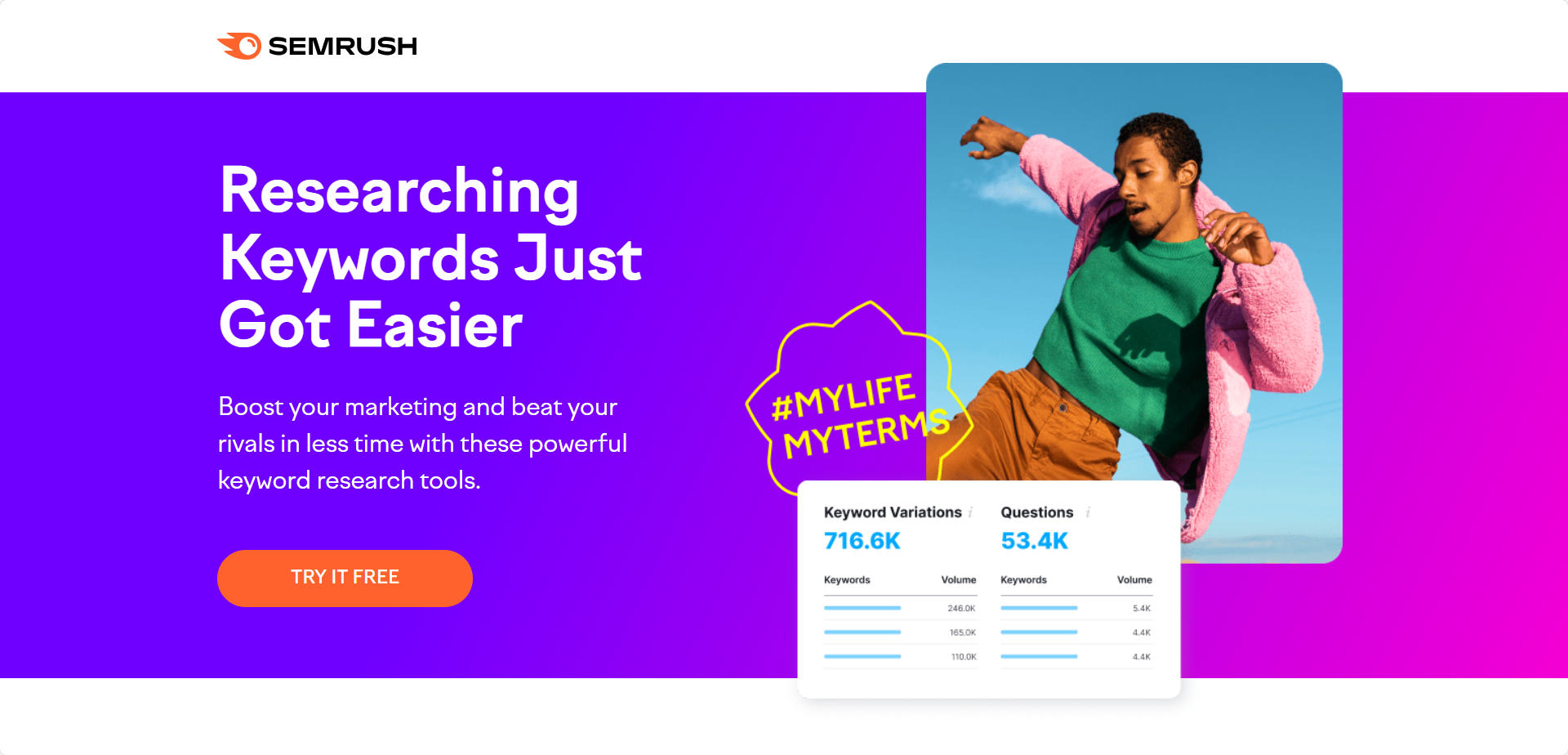Welcome to the world of content creation—a realm where creativity and strategy intertwine to shape the digital landscape.
In this comprehensive guide, we'll delve into the art and science of crafting content that resonates with your target audience and elevates your online presence.
What Is Content Creation?
At its core, compelling content creation involves crafting valuable and engaging materials for your audience. It's about sharing information, stories, ideas, and perspectives in formats that capture attention and spark interaction.
From blog posts and social media updates to videos and visuals, content creation encompasses various mediums designed to connect with people and leave a lasting impact.
Types Of Content Marketing And Content Creation:
Blog Content: Blog posts are a cornerstone of the digital landscape. These written pieces offer readers in-depth insights, tips, and stories that cater to specific interests.
Whether you're sharing a personal experience, discussing industry trends, or providing how-to guides, blog posts provide a platform for sharing valuable information in a structured and engaging manner.
They're a versatile format that allows you to explore various topics while connecting with your audience.
Social Media Posts: Social media platforms offer the perfect space for concise and impactful content. Social media posts encompass a variety of content types, from short text updates to striking visuals and videos.
These posts help you connect with your audience by sharing updates, thoughts, promotions, and insights in a way that resonates with your followers. Their brevity and immediacy make them ideal for engaging your audience in real-time conversations.
Video Content: In a world where visual communication is paramount, video content reigns supreme. Videos are a dynamic and powerful tool that allows you to convey stories, demonstrate products, share tutorials, and connect with your audience on a more personal level.
Educational Content: Establishing yourself as an authority in your field is crucial, and educational content helps you achieve that. This category includes comprehensive guides, informative tutorials, e-books, and webinars that provide valuable insights and knowledge to your audience.
Visual Content: Visuals hold a unique power to convey messages quickly and effectively. Infographics, images, and charts visually simplify complex concepts, making them more digestible for your audience.
Visual content enhances your ability to communicate key points, statistics, and data in a visually appealing manner, capturing attention and aiding in understanding.
Product Descriptions: For businesses, crafting compelling product descriptions is essential for driving sales. A well-written product description goes beyond listing features; it highlights benefits, unique selling points, and the value the product brings to customers' lives.
Who Benefits From Content Creation And This Guide?
Business Owners: Creating relevant and original content is a powerful tool for business owners. It enhances your marketing strategy by engaging potential customers, increasing brand visibility, and ultimately driving sales.
Bloggers: Understanding different content creation approaches is essential whether you're a hobbyist or a professional blogger. This guide provides insights into structuring your content, using persuasive frameworks, and crafting attention-grabbing text elements.
Content Marketers: Content marketers are focused on boosting a brand's online presence through effective content strategies. This guide is valuable for enhancing your SEO strategy and improving search engine rankings.
Influencer Marketing: For influencers, content creation is at the core of what you do. This guide can help you connect more deeply with your followers by creating captivating content that reflects your unique perspective and resonates with your audience.
Digital Marketers: Digital marketers wield content creation as a versatile tool within their broader marketing strategies. This guide empowers you to develop comprehensive marketing plans incorporating blogs, social media posts, video content, and more.
Entrepreneurs: Whether starting a business blog or managing your online presence, this guide provides invaluable insights to elevate your content game. Entrepreneurs can learn to effectively frame their perspectives, structure content, and call their audience to action.
In essence, anyone looking to leverage content creation to communicate, connect, and grow can benefit from the insights and strategies presented in this guide.
High-Quality Content Creation Strategies: Explained
1. Write Down A Slug
Instead of deciding your title, consider setting yourself a clear subject. Called a 'slug' by the print newspaper industry, it's usually a 2-3 word proxy for a title.

It should focus the piece on a key subject but not constrain it. Slugs are great because they're short, long enough to guide your content but not too long to get in the way.
Deciding on a title later in developing or researching your content is a much better process. The research will take you towards a perspective, and only then will you be able to write a title that encompasses that idea and hooks the reader.
2. Research The Audience
Many content writers don't spend enough time listening to the audience. A common sales technique: "match and mirror," gets its roots in psychology. Think about it from the perspective of a reader.
You're much more likely to trust something you read if it could have come from you, your family member, or a neighbor.
When you want to appeal to an audience, you need to spend a little time researching what people are saying. Use Google search, Facebook, Instagram, or other social media.
Some dedicated tools like Answer The Public or Ubersuggest can also help narrow down how people talk about your topic. You can use customer reviews, testimonials, and social media comments as source material to understand the words used, tone of voice, and common subjects mentioned about your topic.
Keyword research tools can also allow you to understand how much people talk about each sub-topic. When forming your content, you will want to emphasize things other people emphasize and take your stance.
Regardless of how radical your perspective is, if you use their words, analogies, and tone, you can resonate with them. If you're targeting an audience to sell a product or service to them, ask yourself: What specific words and phrases does this audience use to describe your product/service?
You might even have in-house customer research without knowing it. Support calls, emails, and past customer questions can make a great starting point to understand your audience.
Filling in the questionnaire for a persona can help make sure you don't miss anything in your audience research.
3. Make An Outline
Start with the rough structure of your content. Do you want to use a persuasive framework? Add examples of quotes, reviews, tone of voice, analogies or specific words, and keywords.

Then, fill in the questions you want to cover. A persuasive framework is a content that convinces people by presenting information in a particular way.
A common framework used in marketing content is PAS or Problem-Agitate-Solution. The pain points that customers often have (which should resonate with your audience) are presented first. Then, you present even more reasons why those pain points hurt.
For example, a mattress company ad might ask, "When's the last time you slept well?" Then, they'll say, "A poor night's sleep can cause irritability, low productivity at work, or even permanent psychological issues."
At the end of the article, after presenting a few more tacked-on issues you might be having as a result of your bad sleep, the solution is presented, "Meet tomorrow morning fresh with the BluTek pillow, with NASA-developed technology to ensure perfect spinal alignment all night long!"
You can use other writing frameworks, such as AIDA or attention-interest-desire-action to stand out. Or, you could break the mold entirely and write your content in a narrative style, with dialogue and action.
Lastly, you could go the expository route, perhaps the most common content you'll find today. Long, well-researched content like this blog post is considered expository.
Expository content explains from the basic concepts to advanced or advanced to bare, to cover a vast amount of conceptual territory.
4. Frame Your Perspective
A headline is something you might start thinking about now. But what's more important is the perspective and framing of your content. To develop a unique perspective, consider several truisms or idioms revolving around your topic.
Then, you can use those concepts to ask critical questions. For instance, are there any of these concepts that everyone accepts as fact, which you can turn on its head and argue the opposite? Can you create any situations where it's important to have these opposite experiences? Have any of these situations happened to you?
Taking an uncommon perspective will make your content much more worthy of reading rather than restating what people already know.
5. Start Early On Your Visuals. Your visuals can be conversation pieces that your content builds upon. At least for now, you should insert placeholders for your images with the general concepts in mind and form your content around the concept. Visuals can be very complex so you can talk about a single one at length.

And if you want to dabble in creating visuals yourself, it's not difficult. Personalized visuals get much more reshares, so it's worth the effort. Beginners can create their own branded, custom visuals with tools like Figma, Visme, or Vectornator/Linearity.
Then, use those visuals to expand on your content, draw attention to a concept, or say something without needing any words.
6. Emphasize Text
Visuals don't just need to be pretty pictures. Think about text emphasis. For example, a quote, something important, or even a suspenseful phrase that gets readers to turn the virtual page and see what you will talk about next.
Like headlines, you should consider emphasizing text that turns a truism or idiom around in a new perspective or doesn't fit the mold. Readers will think, "Hmm, that isn't what I expected," and be encouraged to find out what you're on about in the next section.
7. Keep It Concise
Keeping the text as short as possible increases the potency of what is being said, reducing dilution and increasing engagement. If you're using the words "if, whether, and, but, or,"- consider eliminating them.

If your content sounds more authoritative without these words, it might be a great way to be more concise and assertive with your opinions. Discuss how shorter paragraphs are more visually appealing, and it should be considered where users will view the content and what the website looks like on mobile devices.
8. Use Writing And Editing Tools
Use tools like Grammarly, Microsoft Editor, and others to teach yourself better grammar, build vocabulary, and lose your bad habits. These tools can eliminate bad habits, such as passive voice, split infinitives, prepositions at the end of sentences, and excessive use of non-content words.
Most of these habits happen when writers focus on making their content longer, not framing, persuasive arguments, or writing as short as possible.
The cool thing about AI editors today is that they have rich details as to why they are making the suggestion.
So, you learn as you receive feedback from the editor. Before long, your native writing score will be high without applying the editor to your text.
9. Call Your Readers To Action
A CTA, or "Call To Action," is the part where you get your readers to do something like "learn more," "download," or "sign up." But CTAs can be much more subtle and woven throughout the writing process.

If you're selling products or services with your content, remember that the most common framework is PAS, with the CTA at the end. Because PAS is so common, users expect this and tend to ignore it.
The CTA doesn't need to be at the end, like in the PAS framework. Less obvious, more natural formats exist, which incorporate subtle cues for the reader to take action, like learning more, diving deeper into similar topics, or leading to a purchase. Natural or native advertising is content where you talk about a topic in a useful way to the reader but advertise something else.
It's usually an off-hand mention useful for that particular workflow. It differs greatly from display advertising or more overt formats because the content is directly helpful, even without the sentence or two that leads into the advertisement.
10. Resist Overediting
Is your content done? Is the original length blooming out of control during the writing process? If your editing is working properly, shouldn't it be getting shorter? Do you still have the overarching theme and perspective that you started with?
Many content pieces die due to over-editing and perfectionism. Maybe try having several peers read different versions and rate the result. You'd be surprised at just how many of them are satisfied with your 'inferior' early results.
Do's And Don'ts
- Do: Adapt your content strategy to evolving trends and preferences.
- Don't Duplicate content; prioritize originality for improved search engine rankings.
- Explore diverse content formats, from blog posts to social media updates and videos.
- Don't Underestimate the power of search engine optimization (SEO) for increased visibility.
- Do: Include internal and outbound links to enhance user experience and credibility.
- Don't Neglect an editorial calendar for consistent content creation and organization.
- Do: Seek industry insights to stay informed about emerging trends and best practices.
- Don't Overwhelm mobile users with lengthy paragraphs; optimize for mobile browsing.
Final Thoughts
In content creation, you're not just a creator; you're a storyteller, an educator, and an influencer. Armed with our comprehensive 10-step checklist, you now possess the tools to transform your content into an engaging, captivating masterpiece that resonates with your audience on a profound level.
Well-crafted content bridges the gap between you and your audience, creating an experience that resonates long after consumption.
By embracing this checklist and nurturing your creativity, you're becoming a content creator and a curator of experiences that shine brilliantly in the digital universe.
Content Creation FAQ
How can I optimize my content for search engines (SEO)?
To optimize your content for SEO, focus on using relevant keywords naturally in your content, headings, and metadata. Ensure your content is well-structured with headings, subheadings, and bullet points. Include internal and external links, optimize images with descriptive alt text, and aim for fast loading times.
Remember that successful content creation involves understanding your target audience, tailoring your content to their needs, and consistently providing value through your content pieces.
What are some tips for maintaining a consistent content schedule?
Consistency is key for keeping your audience engaged. Plan ahead by creating an editorial calendar, set realistic goals, and stick to a regular posting schedule. Batch your content creation to streamline the process and use automation tools to schedule and publish posts.
What's the importance of high-quality content?
High-quality content is crucial because it establishes your expertise, builds trust with your audience, and enhances your brand's reputation. It's more likely to be shared, increasing your reach, and can improve your search engine rankings, driving organic traffic to your platforms.
How do I come up with ideas for my content?
Generating content ideas can come from various sources: current trends, common questions your audience has, personal experiences, industry news, and keyword research. Engaging with your audience through surveys or comments can also provide valuable insights.







